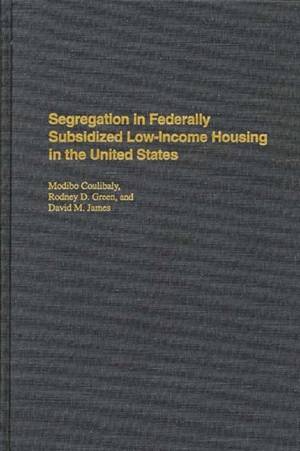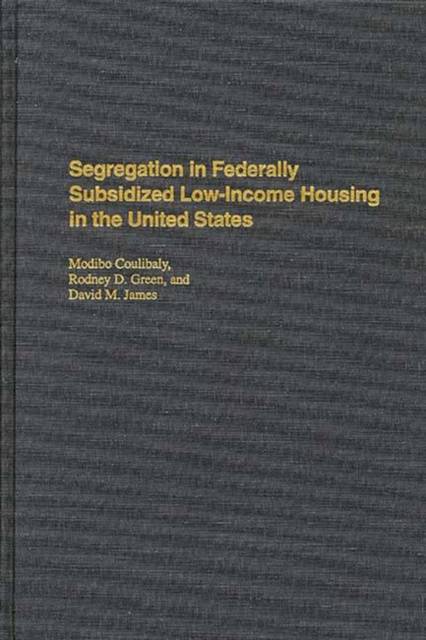
En raison d'une grêve chez bpost, votre commande pourrait être retardée. Vous avez besoin d’un livre rapidement ? Nos magasins vous accueillent à bras ouverts !
- Retrait gratuit dans votre magasin Club
- 7.000.000 titres dans notre catalogue
- Payer en toute sécurité
- Toujours un magasin près de chez vous
En raison de la grêve chez bpost, votre commande pourrait être retardée. Vous avez besoin d’un livre rapidement ? Nos magasins vous accueillent à bras ouverts !
- Retrait gratuit dans votre magasin Club
- 7.000.0000 titres dans notre catalogue
- Payer en toute sécurité
- Toujours un magasin près de chez vous
Segregation in Federally Subsidized Low-Income Housing in the United States
Modibo Coulibaly, Rodney D Green, David M James
127,45 €
+ 254 points
Description
Earlier studies of subsidized housing assume that segregation is a manifestation of white prejudice, and that the Fair Housing Act of 1968 would significantly remedy inequalities in housing and, in the process, narrow the socioeconomic gap between racial groups. This book argues, on the contrary, that segregation by race and income has been an integral part of federal housing policy from its inception and that white prejudice merely obscures the federal government's role in maintaining segregation.
Despite formal claims of providing decent, safe, and sanitary housing for the poor, the authors show how federal low-income housing programs have been used as instruments of urban renewal while doing little to realize their formal goals. The authors use a historical and statistical review of federally subsidized low-rent housing to demonstrate their thesis.Spécifications
Parties prenantes
- Auteur(s) :
- Editeur:
Contenu
- Nombre de pages :
- 168
- Langue:
- Anglais
- Collection :
Caractéristiques
- EAN:
- 9780275948207
- Date de parution :
- 25-03-98
- Format:
- Livre relié
- Format numérique:
- Genaaid
- Dimensions :
- 163 mm x 243 mm
- Poids :
- 421 g

Les avis
Nous publions uniquement les avis qui respectent les conditions requises. Consultez nos conditions pour les avis.






